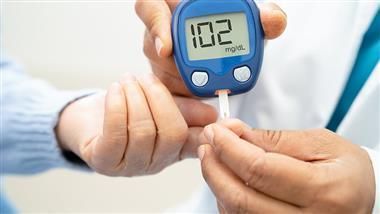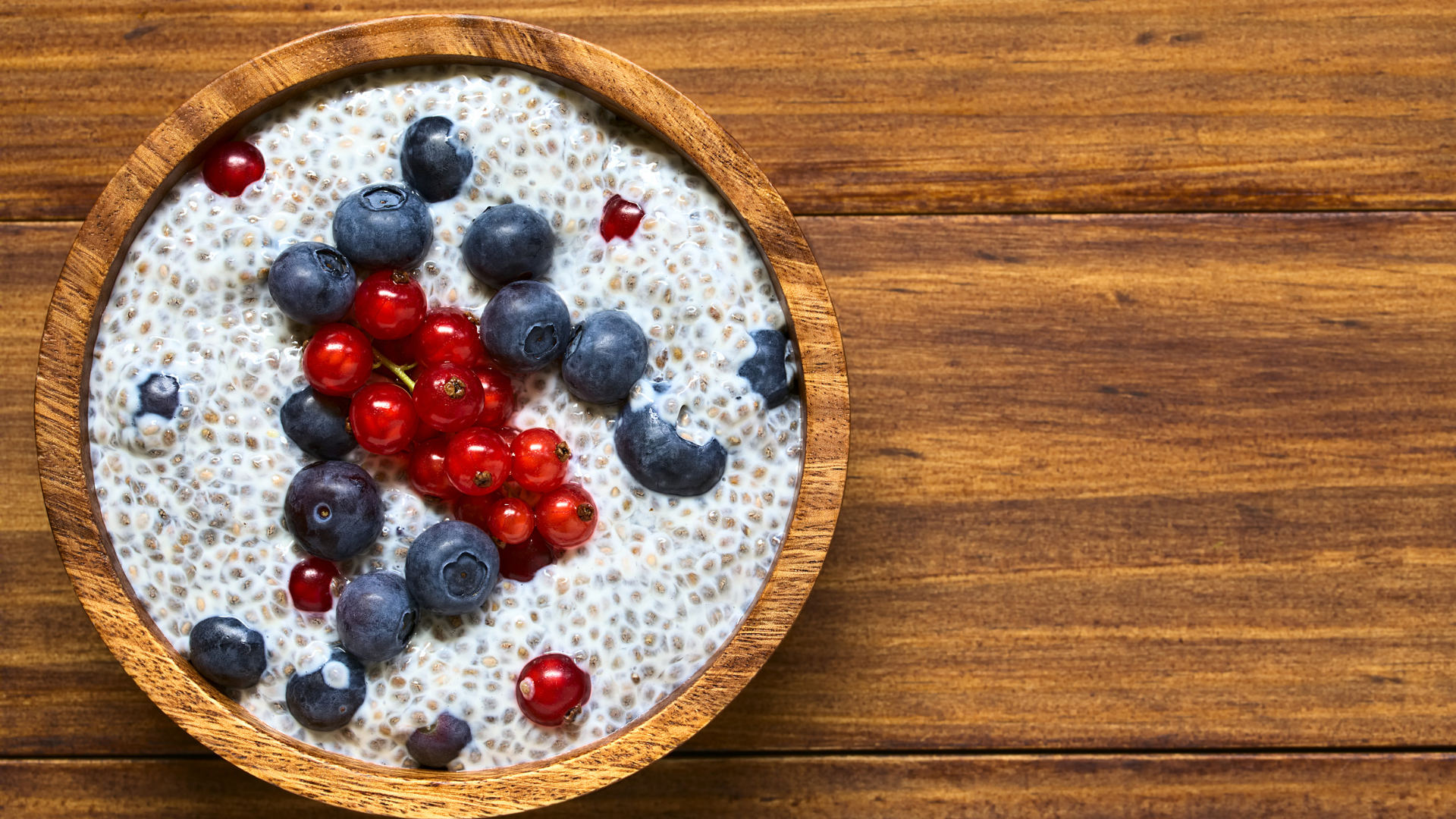January 6, 2025
Key takeaways: U.S. News & World Report has released its 2025 list of best diets, including top-ranked diets for people with diabetes. The list includes nutritious eating patterns such as the Mediterranean diet, the DASH Diet, and the MIND Diet. These dietary eating patterns are optimal for people who are trying to keep blood sugar levels stable. For people living with diabetes, it’s important to eat in ways that help keep blood glucose levels within normal range consistently throughout the day, rather than rapidly fluctuating between figures that are high and low. This often translates to a focus on eating regular, portion-mindful meals that feature lean sources of protein and whole foods plentiful in fiber, along with limiting food or drinks that are high in sugar or simple carbohydrates. U.S. News & World Report issues a list of top diets at the start of each year, with a ranking of their favorites in various health categories, including diabetes and prediabetes. Below are the top four results for the diabetes category, listed in ranked order – plus a bonus honorable mention from the editorial team at diaTribe. While all of these diets – better described as meal patterns – favor whole foods as well as minimize added sugars and refined carbohydrates, their approaches vary. All of these diets, however, have been shown to help improve blood sugar levels while providing adequate nutrition. 1. The Mediterranean diet The Mediterranean eating pattern focuses on consuming an abundance of vegetables, fruits, legumes, beans, nuts, and seeds with low to no red meat intake. It also encourages whole grains, extra virgin olive oil as a main source of healthy fat, moderate amounts of fish rich in omega-3 fatty acids (such as salmon or tuna), and cheese and yogurt . Sweets should be consumed sparingly, if at all. Benefits of the Mediterranean diet Studies have shown that the Mediterranean diet can improve insulin sensitivity, help regulate blood sugar, reduce A1C levels , and lower the risk of type 2 diabetes. Notable health organizations, including the American Heart Association (AHA) and the American Diabetes Association (ADA), have endorsed the Mediterranean diet. What’s more, the Mediterranean diet adds flexibility. “The Mediterranean meal pattern is based on a general pattern of eating that can be adapted to different cultural traditions and food preferences,” said Daisy Seremba, a Georgia-based registered dietitian and certified diabetes care and education specialist. “There are no exclusions of specific foods or food groups, making it easy to follow long term and maintain the health benefits it offers.” Drawbacks of the Mediterranean diet The Mediterranean diet offers many benefits and is an excellent option for most people, but cost may be a concern. “Some consumers report the cost of such things as olive oil, fish, nuts, and seeds may be prohibitive for their budgets,” Seremba said. She recommends shopping for frozen fish or canned varieties, which confer many of the same benefits, as a way to save on the cost of purchasing items such as fresh seafood. Those on the Mediterranean diet may also need to be mindful of carbohydrate content. “Because the Mediterranean diet promotes the intake of fruits, vegetables, and whole grains, people with diabetes may need additional guidance from a registered dietitian or diabetes care and education specialist to ensure they are following their meal plan and limiting their carb intake as needed,” Seremba said. 2. The flexitarian diet The flexitarian eating pattern is a mix between vegan and vegetarian with the flexibility to consume animal products in limited amounts. The majority of foods eaten are plants, nuts, seeds, whole grains, legumes, fruits, and vegetables. It includes three stages: The first stage limits meat to two days per week with no more than 28 ounces per week. The second stage consists of consuming more plant-based foods (eggs and dairy are allowed) three to four times per week, with less than 18 ounces of meat weekly. The third stage limits meat to no more than 9 ounces per week. If you follow the flexitarian diet, you’ll primarily eat plant-based foods, with occasional lean, organic, grass-fed or pasture-raised meat, poultry, eggs, dairy, and fish. Benefits of the flexitarian diet “The flexitarian eating pattern encourages consumption of more plants as the base of the diet with less emphasis on consuming meat, which is more environmentally friendly and healthier in terms of saturated fat content. In addition, a flexitarian diet is higher in fiber, fruits, and vegetables than the typical or standard American diet,” said Sue-Ellen Anderson-Haynes, a registered dietitian and national spokesperson for the Academy of Nutrition and Dietetics. Anderson-Haynes said the flexitarian diet may be a good option for people with diabetes. She pointed to a 2019 study showing that people who closely followed plant-based dietary patterns had a 13% lower risk of developing type 2 diabetes, compared to those who did not strictly follow a plant-based diet. “Plant-based diets, such as the flexitarian diet, are plentiful in fiber, antioxidants, magnesium, and other nutrients that are well documented in research to assist with the prevention and management of chronic illness such as heart disease, cancer, and diabetes,” said Anderson-Haynes. “In terms of managing diabetes, plant-based diets have shown promising results to slow down complications related to diabetes,” Anderson-Haynes said. “Conversely, research reports that diets high in animal protein increase diabetes risk.” Drawbacks of the flexitarian diet The flexitarian diet imposes no limits on the amount of eggs or dairy consumed. "There is no true limit on eggs and dairy as there is with meat, so people following this diet may not know how much of these foods to limit or to consume,” Anderson-Haynes said. 3. The MIND diet The MIND eating pattern, which stands for Mediterranean-DASH Intervention for Neurodegenerative Delay, is a combination of the Mediterranean and DASH eating patterns. The MIND diet encourages people to consume vegetables, nuts, olive oil, whole grains, berries, fish, beans, poultry, and wine in moderate amounts, although newer studies recommend against having any amount of alcohol). Benefits of the MIND diet Both the Mediterranean and DASH eating patterns have been shown to positively impact the management of diabetes and its comorbidities, including high blood pressure, cardiovascular disease (CVD), high blood cholesterol, and obesity. Several studies also suggest that MIND can slow the progression of Alzheimer's disease, although the specific nutritional components responsible for these possible benefits or their mechanism of action haven’t been well studied. “Several studies suggest that healthy fats, like omegas in olive oil and phytochemicals in berries, might be responsible for the neuroprotective effects,” said Sandra J. Arévalo Valencia, a CDCES and director of community health and wellness at Montefiore Nyack Hospital in New York. “In addition to reducing the risk of mental illness, it can help control weight, improve glycemia, improve cholesterol levels, and reduce hypertension,” Valencia said. “MIND doesn’t restrict any food groups, allowing for well-balanced meal plans that can be followed long term without causing any dietary insufficiencies.” Drawbacks of the MIND diet “When talking about MIND with my patients with diabetes, I recommend they exercise caution with the amount of fruit and nuts they consume. Excessive fruit intake could increase glycemia (blood glucose levels),” Valencia said. “In addition, the high fat content of nuts could cause weight gain. The fact that you are eating good fats doesn't take away from the reality that all fats are high in calories.” As with the Mediterranean eating pattern, Aravelo said MIND can be expensive, as ingredients such as fresh berries, olive oil, avocados, salmon, and other recommended foods tend to be costly. 4. The DASH diet DASH – which stands for Dietary Approaches to Stop Hypertension – emphasizes healthy foods like fruits , vegetables, whole grains, lean proteins, and low-fat dairy, while discouraging red meat, added salt, sugar, or saturated fat. This eating pattern is a flexible, heart-healthy diet that can help manage high blood pressure and prevent cardiovascular disease. Eating the DASH way results in a nutrient-dense meal plan high in potassium, calcium, magnesium, fiber, and protein; the ADA has published a consensus report on the effectiveness of the DASH meal plan for people with diabetes. Benefits of the DASH diet In addition to promoting blood pressure control, this eating pattern has been shown to improve insulin resistance, high cholesterol, and obesity, said Kari Garner, a South Carolina-based registered dietitian and CDCES. Garner pointed to a 2022 study that linked the DASH diet to lower mortality risk among individuals with diabetes. “The DASH diet encourages the intake of nutrient- and fiber-rich foods, which can promote weight loss and decrease blood pressure and cholesterol. The DASH diet also has cardiovascular benefits similar to the Mediterranean diet,” Garner said. Drawbacks of the DASH diet One challenge of DASH is that more than 50% of the calories come from carbohydrates, which may be too high for some people with diabetes. DASH carbohydrates may range between 180-270 grams per day, depending on the calorie level. There’s also the challenge of keeping sodium to below 2,300 milligrams (less than 1 teaspoon) per day. “DASH may be hard to sustain due to perceived lack of flavor in foods,” Garner said, adding that limited culinary skills, affordability of fresh ingredients, and lack of an organized support system as other possible impediments to success on DASH. 5. diaTribe honorable mention: The vegan diet This diet, which came in at number seven, didn’t make it to the top of the U.S. News rankings in 2025. Nevertheless, diaTribe believes it deserves special mention for its noted preventative benefits to the heart and liver, parts of the body that are especially important to care for to avoid complications with diabetes, as well as to the gut microbiome. Following a vegan eating pattern means eliminating all animal products from your diet – no meat, fish, or dairy. Some vegans also exclude honey and gelatin from their diet. This eating pattern focuses on primarily eating grains, fruits, vegetables, legumes, nuts, and seeds. While the vegan diet is certainly more limited than a vegetarian diet, there are many new plant-based protein sources offered at grocery stores, restaurants, and even major chains across the U.S. Benefits of the vegan diet Unlike other diets, the vegan diet has fairly straightforward requirements: all plant foods are included. As long as it comes from a plant, you can eat it. There are no strict limits on the number of calories or the amount of food you eat. Vegan diets are generally high in fiber and low in saturated fats, so they fit within a heart-healthy diet and align well with dietary guidelines for people with diabetes. A small study of people with type 1 diabetes found that the vegan diet delivered several benefits, including reduced total daily insulin dose, improved insulin sensitivity, and weight loss. Research suggests following a plant-based diet can reduce the risk of several chronic conditions, including CVD, obesity, and even some cancers. Drawbacks of the vegan diet When you eliminate all animal products from your diet, it can be difficult to get enough of certain nutrients, like vitamin B-12 and iron. Experts recommend taking a certified B12 supplement and consulting with your healthcare provider if you experience any symptoms of B12 deficiency, such as: Cognitive changes like depression, fatigue, and memory impairment Muscle weakness Breathlessness Weight loss Increased heart rate While it’s certainly possible to get enough protein from plant sources, you may have to think creatively at first and explore other options like tofu, tempeh, lentils, plant-based milks, nuts, and seeds. The bottom line: What’s the best diabetes diet for blood sugar management? No eating plan or pattern for diabetes is magical. However, with careful consideration and an understanding of your personal goals, preferences, and capacity to adjust, one of these meal patterns may be right for you. Combining one of these eating patterns with the diabetes plate method – a recommendation of half non-starchy vegetables, one-quarter protein, and one-quarter carbohydrate foods – can help you create balanced, healthy meals and manage blood sugar. Of course, it’s important to combine healthy meals with physical activity to support blood glucose control, maintain a healthy weight, and reduce the risk of diabetes complications. If you’re looking for assistance with meal planning, a registered dietitian and CDCES can help. Here is a helpful database to find a CDCES who can work with you.

















